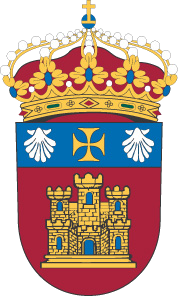Por favor, use este identificador para citar o enlazar este ítem: http://hdl.handle.net/10259/9890
Título
What Lurks in the Peripheries: From Urban Margins to Marginal Genres in Short Stories by Margo Lanagan and Ariadna Castellarnau
Autor
Publicado en
Urban Mobilities in Literature and Art Activism, p. 259–284
Editorial
Palgrave Macmillan
Fecha de publicación
2024-02
ISBN
978-3-031-42798-5
DOI
10.1007/978-3-031-42798-5_12
Resumen
This chapter explores the disaggregation and strangeness that increases when urban landscapes merge with suburban panoramas. When trespassing these liminal areas, a sense of in-betweenness brings about a lapse of uncertainty. The literature of the fantastic, in its search for “reality detours,” can profit from this singular scenario where space constitutes an unstable context. The present analysis focuses on two short story collections: Margo Lanagan’s Black Juice (2004) and Ariadna Castellarnau’s La oscuridad es un lugar (2020). While these narratives use realistic materials, there are cracks into reality in them that result in spatial distortions. The fantastic or unusual space is at the crossroads between the center-periphery and stasis-mobility dualisms. There are also recurrent transitions between the solid and realistic dimension of life in human settlements and the transient and imaginary side of existence on the outside. The correlation between these variables is almost regular. Drawing on the productive systematicity of this connection, this chapter illuminates the intersection of spatial borders with the conceptualization of liminal or hybrid genres such as the Unusual, the Weird, and the Eerie. El texto aborda la relación entre periferias urbanas y géneros literarios marginales a través de un estudio comparado de los relatos del volumen Black Juice (2006), de la australiana Margo Lanagan y de los recogidos en La oscuridad es un lugar (2020) de la española Ariadna Castellarnau. En ellos se exploran las dinámicas entre movilidad y espacio narrativo, destacando cómo las periferias de Australia y Argentina funcionan como escenarios de ruptura entre lo real y lo fantástico. A partir de geografías desoladas, ambos autores generan narrativas que desdibujan los límites entre géneros tradicionales, como el realismo, el fantástico y lo distópico. El análisis resalta los paralelismos entre los contextos periurbanos de ambos países, subrayando la tensión entre «civilización y barbarie» y la función simbólica de las periferias en la construcción de subjetividades.
Palabras clave
Periferias urbanas
Movilidad
Literatura comparada
Géneros liminales
Espacio narrativo
Australia
Argentina
Materia
Geografía y literatura
Geography and literature
Literatura española
Spanish literature
Literatura australiana
Australian literature
Versión del editor
Aparece en las colecciones
Ficheros en este ítem
Tamaño:
356.2Kb
Formato:
Adobe PDF










